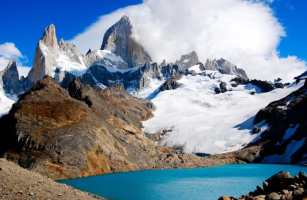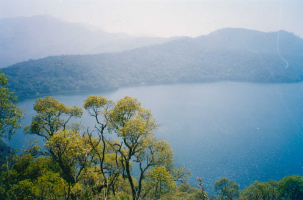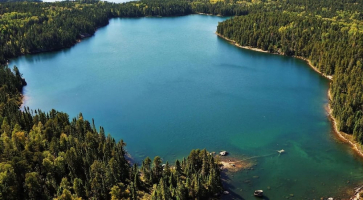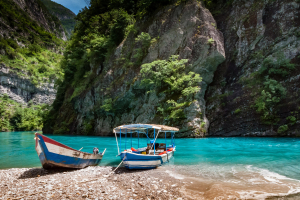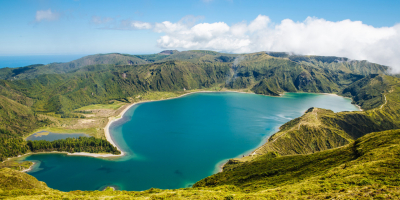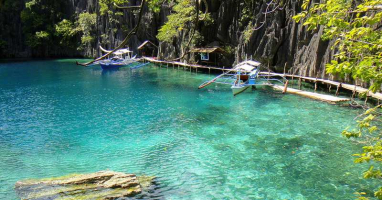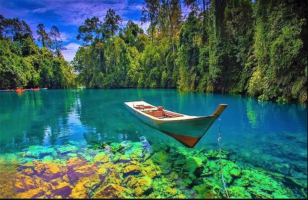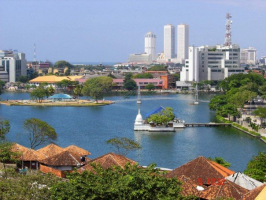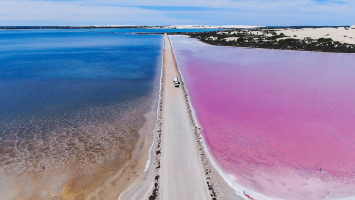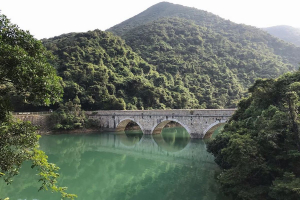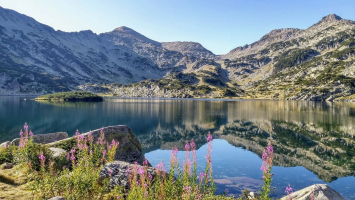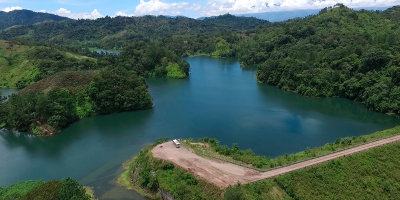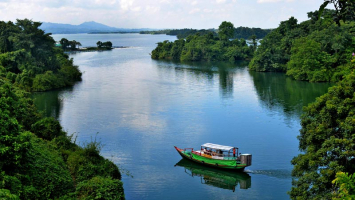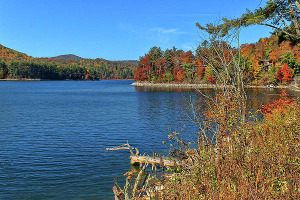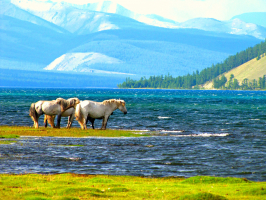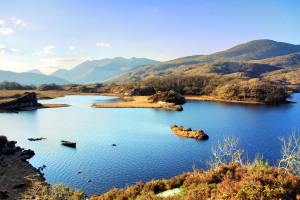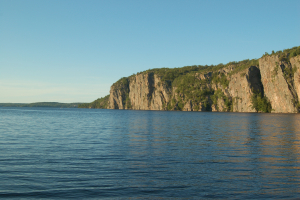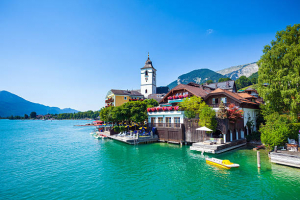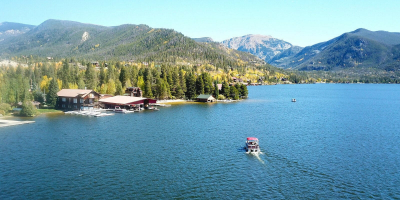Top 15 Most Beautiful Lakes in Central America
Central America is abundant with rivers, lakes, and lagoons due to its tropical temperature, rocky terrain, and vast forests. Some of the most breathtaking ... read more...vistas in nature can be found in places near water. Take tons of pictures while admiring the scenery, or join in the fun by going kayaking, snorkeling, swimming, fishing, or boating. Below are some of the most beautiful lakes in Central America that you should visit one time in your life.
-
Atitlan Lake, in the department of Solola in the highlands of southwest Guatemala, is one of the most beautiful lakes in Central America. One of the most popular tourist locations in the entire nation is Atitlan Lake, and for good reason. The lake's beauty is well known across the world, and it has been named one of the seven natural wonders of the world.
Atitlan Lake is bordered by volcanoes and forested hills, and it truly rests on the crater left by a long-ago volcano eruption. The Mayan tribes once lived in the region around the lake, and now there are still a dozen or so Mayan villages, as well as a few museums that describe their cultural heritage.
Hiking is a terrific activity in the hills surrounding the lake, and other well-liked pursuits nearby include climbing volcanoes, bird viewing, boating, jet skiing, diving, and swimming. Tourists frequently travel to the nearby town of Panajachel to stay the night or take advantage of the area's renowned nightlife after spending a long day at the lake.
Location: Sololá Department, Guatemala
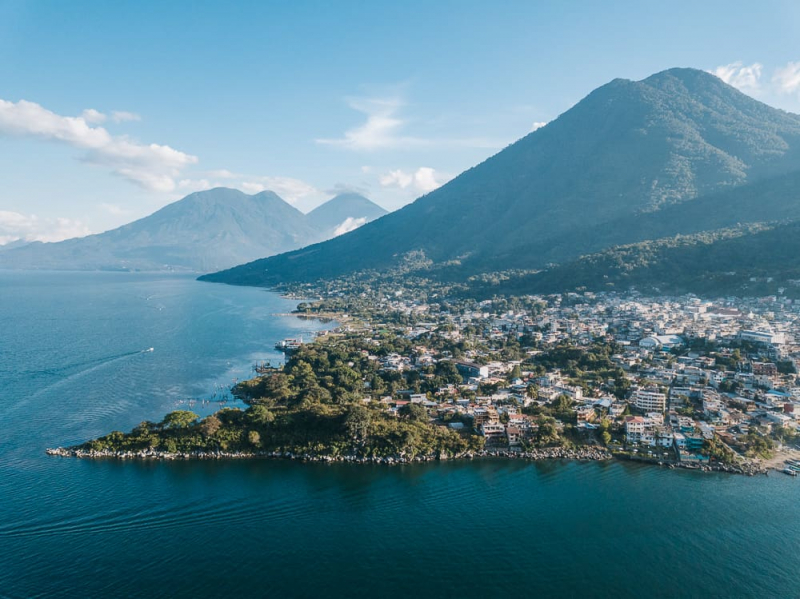
Photo: jonnymelon 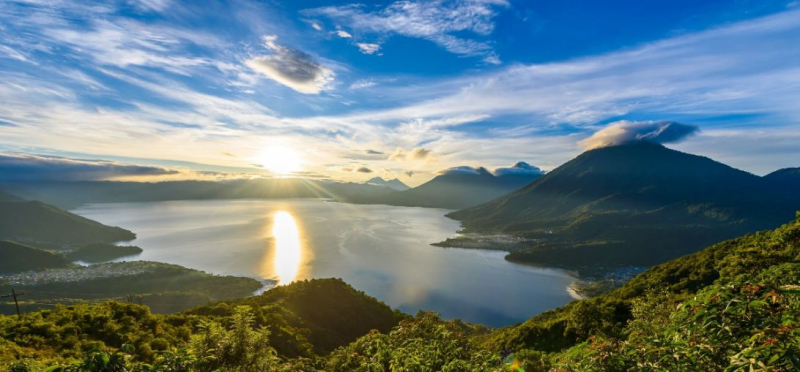
Photo: selina -
Peten Itza Lake in Guatemala is really famous in Central America for many reason, yet some people contend that its surroundings are what give the lake its notoriety. Around the lake, there are at least 27 Mayan archaeological sites, including the well-known Tayazal ruins close to Flores.
Although there are many other exciting things to do around Peten Itza, these locations are absolutely worth visiting. Spend the day exploring the sleepy communities of San Andres and San Jose, which are both found on the western coast of the lake. You may also go trekking and birdwatching in the Biotopo Cerro Cahui or visit El Remate's well-known swimming areas.
Flores is the place along Lake Petén Itzá that is most well-known. Flores, which is located on a small island at the southern end of the lake, is a laid-back community. There are excellent hotels and restaurants in the town, which also has charming cobblestone lanes and vintage pastel buildings. In general, it's a wonderful spot to relax and take it slowly. A causeway links Flores to the sizable town of Santa Elena.
As you tour the lake and the lands around it, keep a look out for crocodiles, deer, jaguars, pumas, parrots, macaws, and toucans. Peten Itza Lake is also home to hundreds of indigenous species.
Location: Petén Department, Guatemala
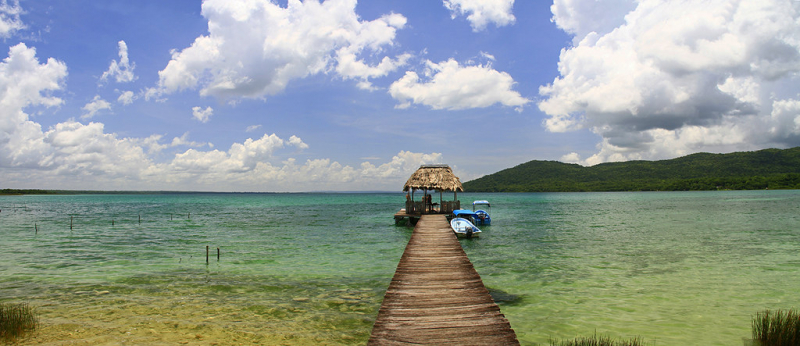
Photo: flirck 
Photo: selina -
The largest lake in Guatemala is located in the northeastern region of the country, and it is regarded as one of the best lakes in Central America. Lake Izabel, which empties into the Caribbean Sea from the nation's main river, the Rio Dulce, was a well-liked trade route during the colonial era.
The Bocas del Polochic Wildlife Preserve is located at the other end of the lake. A diverse range of habitats, including mangroves, marshes, savannas, and flooded forests, can be found in this region. The species that live here are also uncommon, and if you're lucky, you might see a few manatees, crocodiles, different monkeys, tapirs, or jaguars.
Taking a boat excursion around the lake and into Rio Dulce, which connects the lake to the Caribbean, is the primary draw here. During the colonial era, Rio Dulce was one of the major ports in Central America, and the fort was constructed to protect this lake from pirate raids. Also close are some sunken ships.
If all of that wasn't enough to blow you away, head to the lake's northern shore and unwind at Finca el Paraiso's cascading hot springs, explore the extensive cave networks, paddle a canoe through the limestone canyons, or go swimming at the small beach close by.
Location: Central American nation of Guatemala
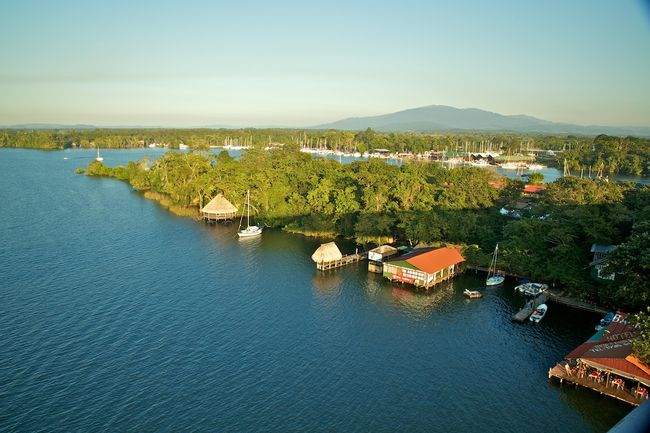
Photo: anywhere 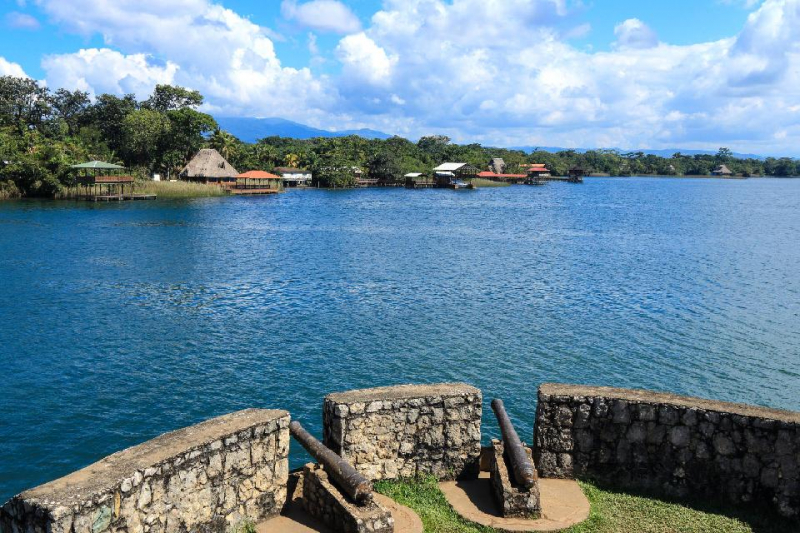
Photo: easyvoyage -
The northern highlands of Costa Rica are home to Lake Arenal, which is the largest lake in the nation and one of the best in all of Central America. Although Lake Arenal was created artificially for the purpose of producing hydroelectric power, it is a popular destination for recreation that draws both visitors and residents.
This lake is located at the base of the Arenal Volcano, which is still active. If you stay until dusk, you might even be treated to a lava show mirrored in the lake. The scenery around Lake Arenal is absolutely breathtaking, and the best views may be had when hiking, scaling the volcano, riding horses, or ziplining. Keep a watch-out for a variety of colorful bird species, tapirs, and even Jaguars if you choose to trek around the lake (though these are rarely spotted).
You can spend the day in Lake Arenal swimming, windsurfing, wakeboarding, kayaking, or paddleboarding if you like to stay near the water. There are only two species of fish that inhabit this lake, but machaca and the renowned rainbow bass are both worth casting out for. Sportfishing is another popular activity here.Location: Alajuela and Guanacaste Provinces, Costa Rica
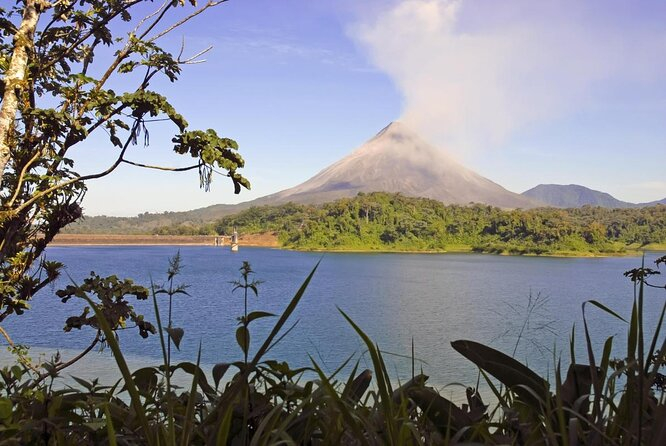
Photo: viator 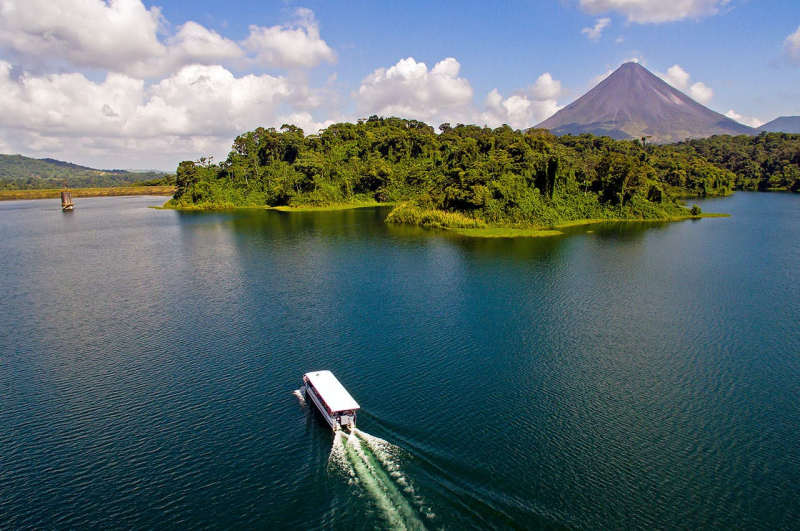
Photo: misticopark -
Lake Nicaragua is the biggest lake in the entire region of Central America. Due to the lake's size, two islands, one of which is an active volcano, can be found there. Due to Lake Nicaragua's immense size, substantial waves, and the potentially hazardous storms that have been known to form over its surface, the Spanish initially mistook it for a sea when they first saw it. The presence of several species, such as sawfish, tarpon, and even sharks, that swim beneath the water's surface but are often only seen in saltwater gives Lake Nicaragua another sea-like quality.
However, don't let it deter you from entering the ocean. When the weather is nice, locals enjoy relaxing at the lake's beaches, and boat cruises are another well-liked tourist activity.
Location: Southern Nicaragua
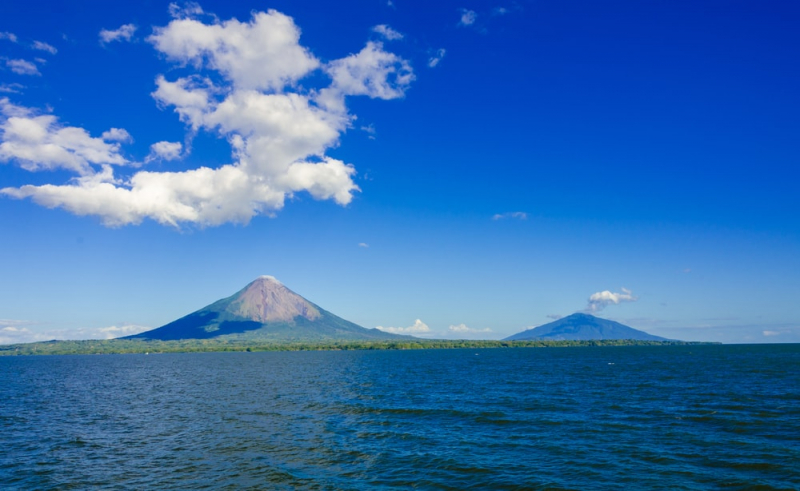
Photo: theculturetrip 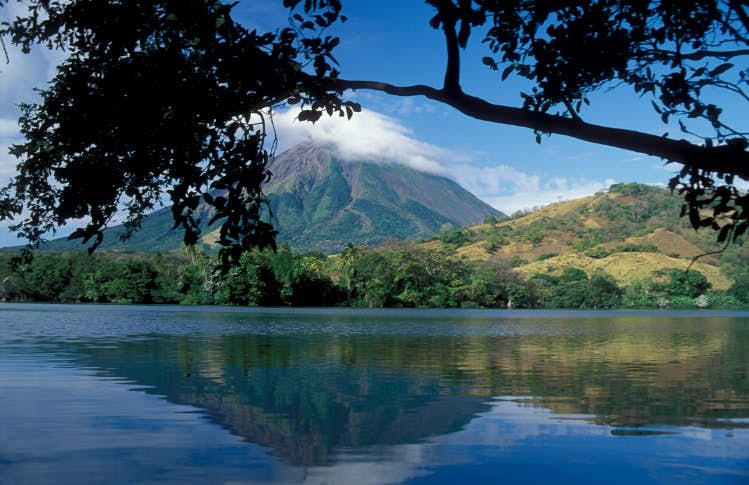
Photo: lonelyplanet -
Spectacular The largest natural lake in Honduras is Lake Yojoa, which is also one of the most popular tourist spots in the least visited nation in Central America. Weary tourists seeking a unique setting to connect with nature can find it in this biodiverse region, which offers a delightfully safe and calm break.
The lake is absolutely amazing to see because its 79 square kilometers of water are located in a volcano-created depression and are flanked by lush mountain peaks that are shrouded in misty cloud forests. The eastern shore of the lake is crossed by the main road that connects Tegucigalpa, the capital of Honduras, and San Pedro Sula, the country's second-largest city; however, there is no road that goes to the lake's western side, leaving it to be a semi-wilderness teeming with a variety of rich bird and animal life.
The main goal of a trip to Lake Yojoa is to embrace nature and revel in the lake's unadulterated beauty and its mountainous environs. Independent travelers can also easily reach the Los Naranjos Ecological and Archaeological Park, where a number of kilometer-long trails converge with a kilometer-long boardwalk that spans the lake's wetlands and provides visitors with incredible access to a variety of wildlife they wouldn't typically have the chance to interact with. The Pulhapanzak waterfall is nearby and only a 30-minute bus ride away; visit the cascade and climb behind the roaring water, zip-line in the surrounding forest, or just relax and take a dip in its cool waters. The lake itself is teeming with bird life, best appreciated on a rowboat or kayak ride at dawn.
Location: northwestern Honduras.
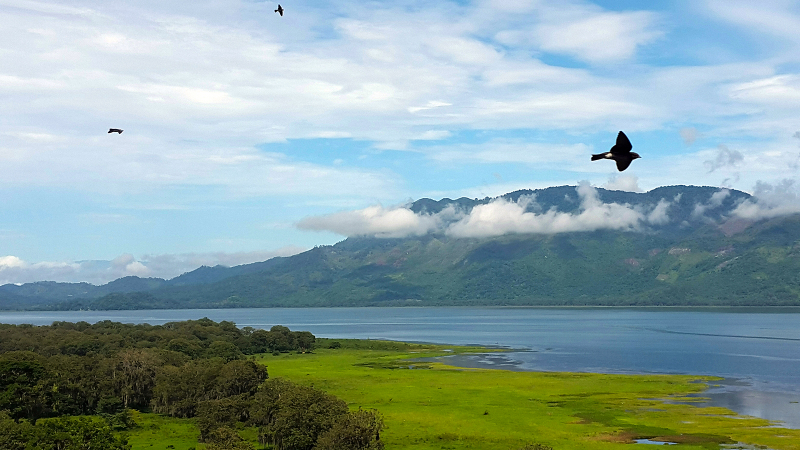
Photo: lonelyplanet 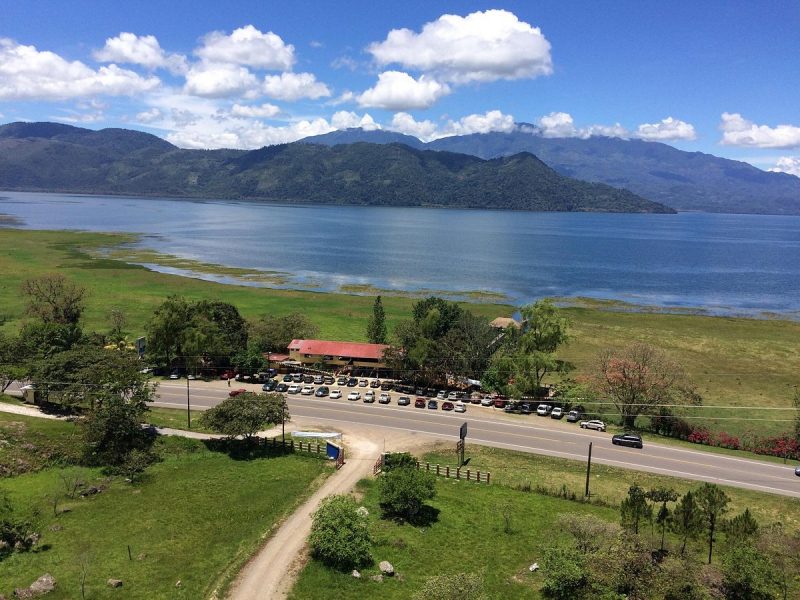
Photo: tripadvisor -
The Cano Negro is one of Central America's best lakes, despite being very shallow. In fact, it is only present for a portion of the year. The lake gradually vanishes after the end of the rainy season in December, and by February, nothing is left of it at all.
This area's wetland habitat is so crucial to the survival of the neighborhood's animals that the RAMSAR convention has designated it as a wetland of worldwide significance. The Nicaraguan grackle and the black-bellied tree duck, among other unusual congregations of birds, are found in the Cano Negro, which will please birders.
Kayaking is one of the greatest ways to explore this small lake; just make sure you arrive during the wet season. Other popular activities include motorcycling, fishing, exploring the local towns, and hiking around the lake.
Location: Alajuela, Costa Rica.
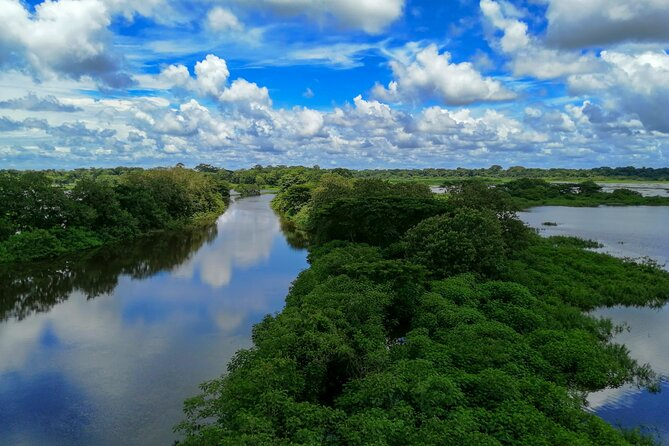
Photo: viator 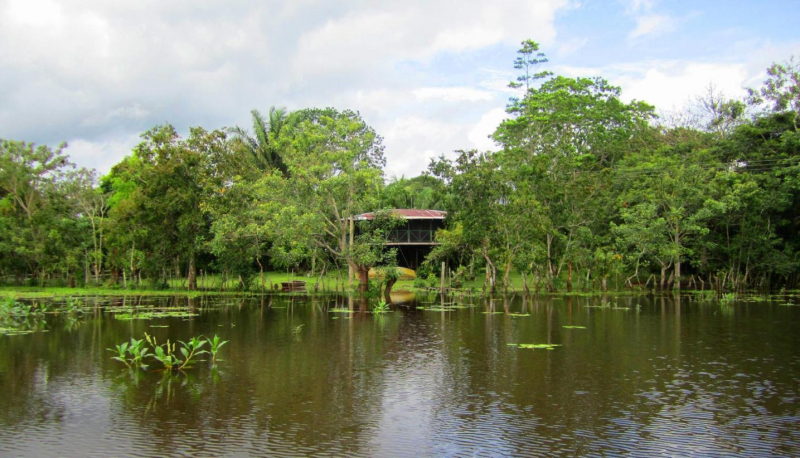
Photo:agoda -
You probably won't be shocked to find that Lake Coatepeque is volcanic in nature, like so many other lakes in Central America. This lake in El Salvador was created by a large volcanic eruption that occurred about 50,000 years ago. Following the explosion, the crater gradually filled with precipitation, creating one stunning lake.
Today, Lake Coatepeque is a posh holiday spot with beachfront hotels, opulent vacation homes, and a ton of delicious restaurants dishing up fresh fish and stuffed tortillas. The area's sumptuous atmosphere is further enhanced by some naturally heated hot springs that are close by.
There are a few hotels on the lake's shore, but the area is very quiet. The majority of visitors are local tourists who come on the weekends, so you'll often find it to be very quiet and private. It's a great place for a couple or large groups. In the lake, you can engage in various activities like kayaking, boat trips, diving, jetskiing, and SUP.
The National Park of Cerro Verde is located next to the lake and is a natural region surrounded by coffee plantations. On the mountain's summit, which was once a volcano, there are various climbing trails from which you can access daily trekking trips to the tops of Izalco and Santa Ana volcanoes.
Location; Santa Ana, El Salvador
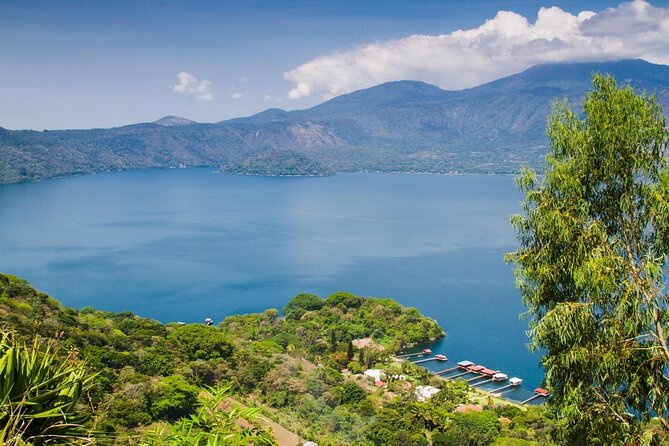
Photo: viator 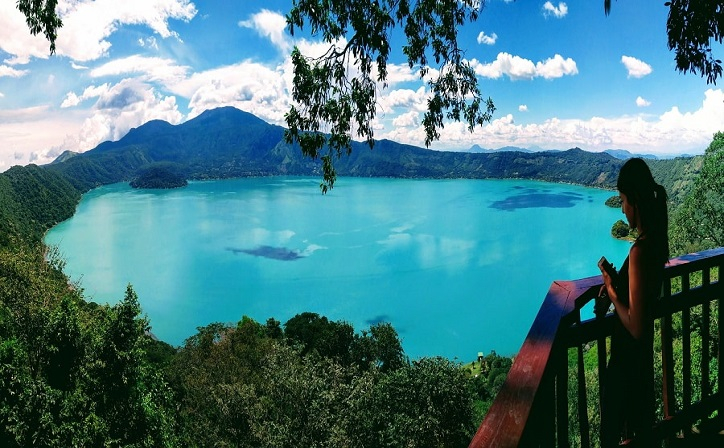
Photo: toursinelsalvador -
The second-largest lake in the nation and a popular place for sci-fi fans who want to witness storied UFOs, this crater lake is tucked away in a picturesque volcanic caldera. One of the best things about Lake Ilopango is how easy it is to get there, only it's a short drive or bus trip from San Salvador, the country's capital.
By taking a boat tour, you can learn all about the different flora and wildlife as well as some lake history, making it the finest way to explore these islands.
Visitors can trek to the top of a nearby lighthouse for magnificent views of the breathtaking terrain El Salvador has grown to be known for or enjoy a cool swim in the crater lake. A day at Lake Ilopango is a peaceful retreat from city life, complete with campgrounds, soccer fields, row boats, and small cafés serving home-cooked, regional cuisine for the ideal lunch after a day outdoors.
Location: on the borders of San Salvador, La Paz, and Cuscatlán departments.
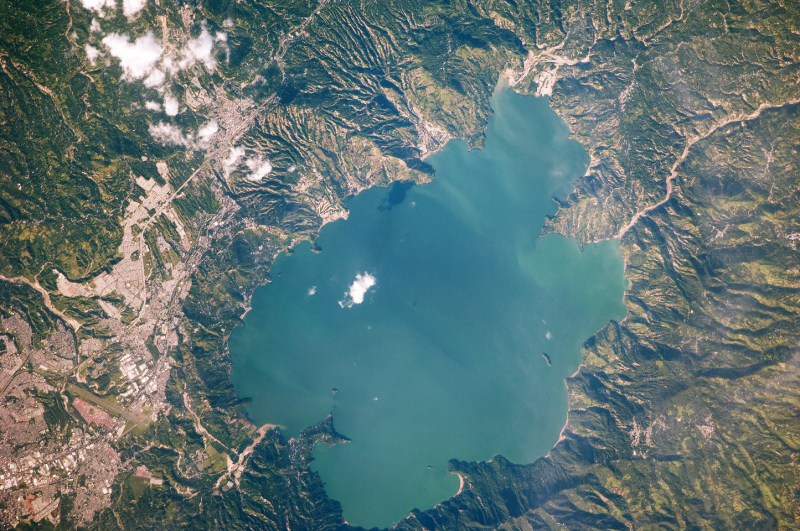
Photo: earthobservatory 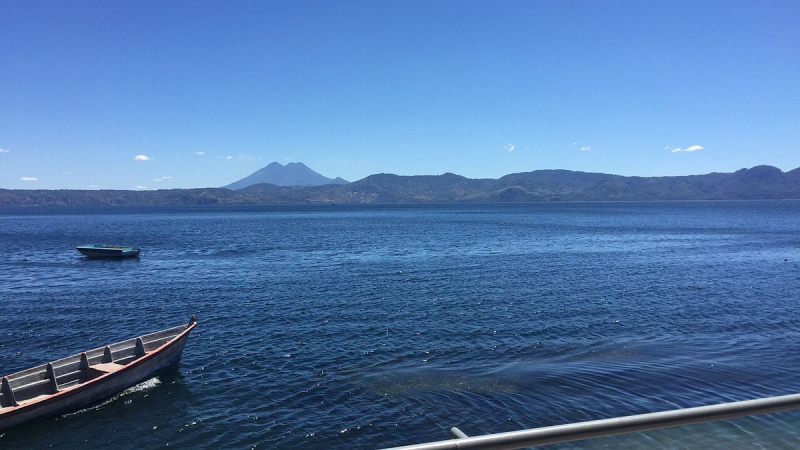
Photo: tripadvisor -
One of the most beautiful lakes in Central America is Lachua Lake, which is situated in a national park surrounded by a tropical rainforest. It is difficult to equal the natural beauty of Lachua Lake and the corresponding national park, and due to the region's tropical temperature, it is also abundant in a variety of flora and wildlife.
The sole drawback of Lachua Lake is the distance you must travel to get there, exactly, 2.4 kilometers (or 1.4 miles). The good news is that while you stroll through the lush rainforest, you might glimpse some animals, including lizards, butterflies, macaws, monkeys, and hummingbirds.
The very short trip to the lake is worth it just for the vista, and the cool, clear water is a wonderful relief on a hot day. As you approach the swimming area, a ranger will greet you and go through all the restrictions with you. The most essential one is to stay away from the spots where crocodiles have been known to swim (don't worry, they are clearly marked).
After spending the afternoon on the lake, if you don't feel like hiking back, there is a wonderful camping next to the bathing area. Just remember to bring everything you'll need because there are no retailers in the park. Additionally, visitors should be aware that there is no electricity.
Location: Cobán, Guatemala
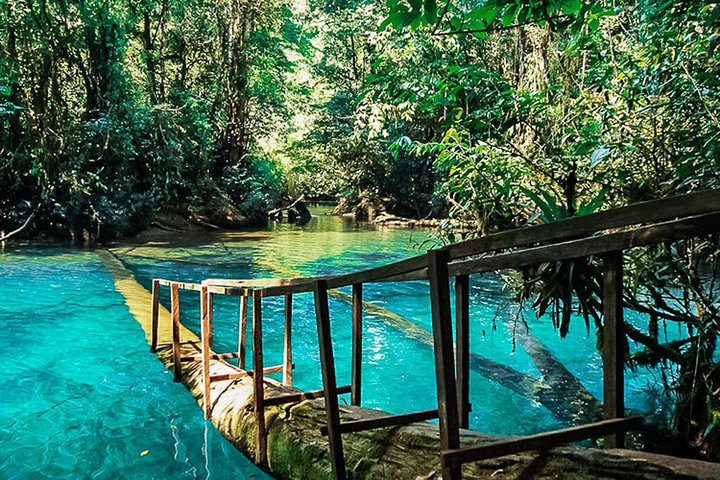
Photo: tripadvisor 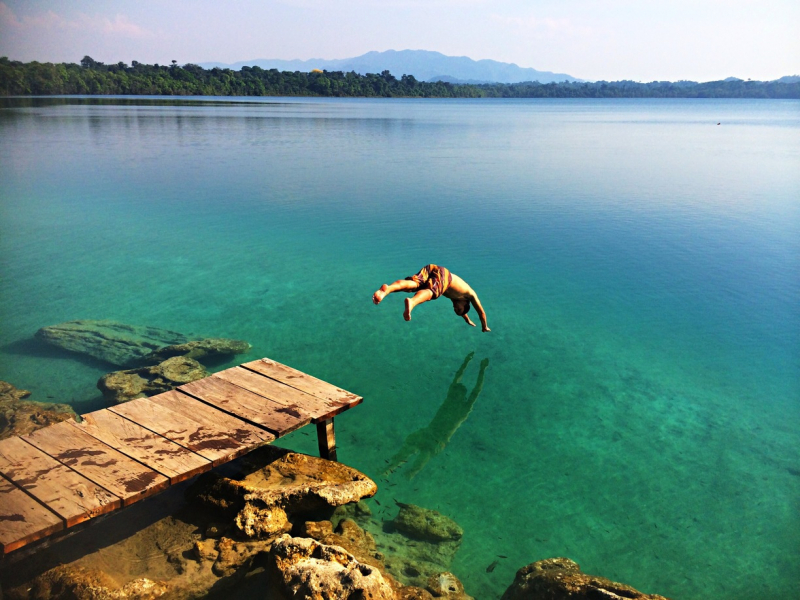
Photo: travelisimo -
The second-largest lake in Panama is located in the country's east, it is called Bayano Lake. It was also made by humans and was built in 1976 along with a dam. Its uniqueness stems from the presence of a series of three caverns on its coasts. Visitors can take boat tours that go deep into the caves during the rainy season.
Today, tourists can enjoy countless recreational activities at this tiny lake, such as kayaking, bird watching, and rock climbing. A tour of the three caverns that are situated along the lake's shores is one of the nicest things you can do while there. By boat, guides will transport you to these caves, where you may explore and take in the ancient stalactites and stalagmites. Keep a watch-out for bats, snakes, and all kinds of insects as you might come across some animals in these caverns.
In the shallow waters of tilapia fishing is a particularly well-liked hobby. The majority of the activities in Bayano Lake are planned by regional tour operators, so you may feel good about spending money on these outings because so many of the adjacent villages depend on tourism.Location: Panamá Province, Panama
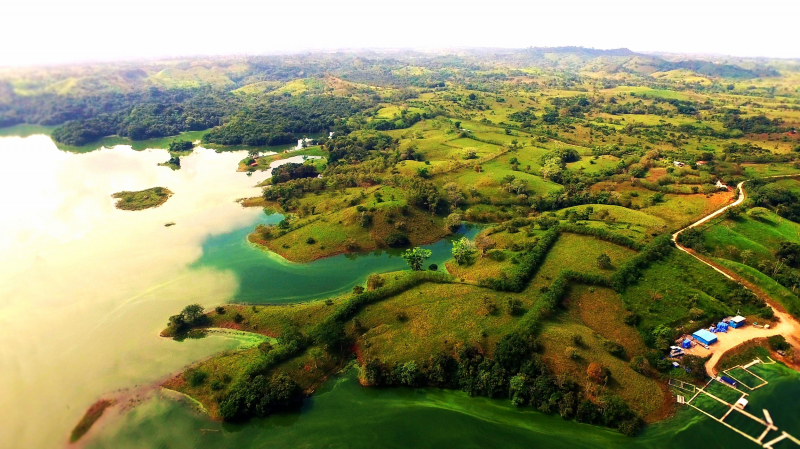
Photo: lakebayano 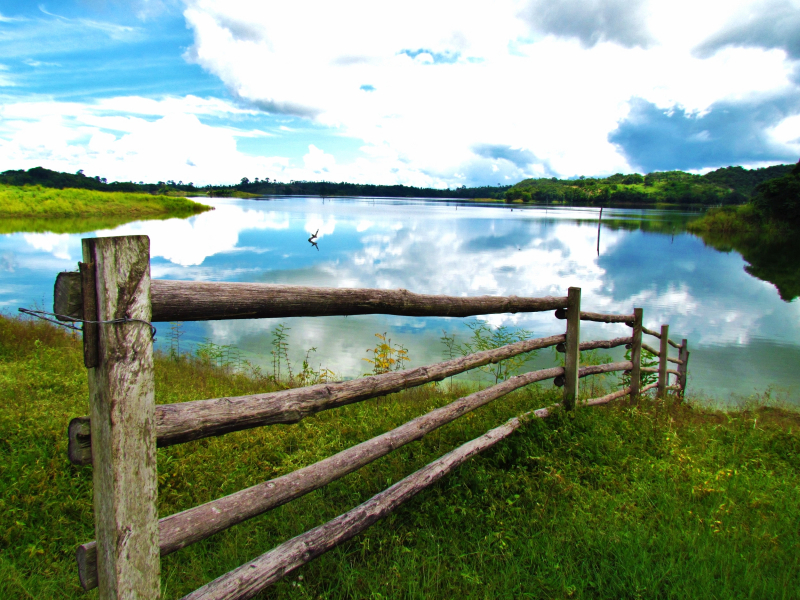
Photo: travelisimo -
One of the most beautiful lakes in Central America is Lake Guija, which lies tucked away along the border between Guatemala and El Salvador. According to historians, the lake was formed when the San Diego volcano erupted, blocking the lake's initial drainage with a lava flow.
Three different volcanoes surround the famously beautiful Lake Guija. The lake also contains a number of islands, some of which have been the site of pre-Columbian artifacts discovered during archaeological digs. Prior to the Preclassic era, Lake Guija was a significant Mayan center, and both El Salvador and Guatemala value its historical and cultural significance.
Although it was never included on the official list, the lake was placed to the tentative list of UNESCO World Heritage Sites back in 1992. However, this hasn't stopped travelers from visiting the coastline, and in addition to the archeological sites, ecotourism is a significant draw to the region.
Despite its rich history and picturesque surroundings, Lake Guija is less well-known than some of the other lakes on the list. This implies that there are less lodging establishments, eateries, and other tourist-oriented enterprises near the lake. However, it would be difficult to find a better location than Lake Guija for those seeking something off the main road.
Location: Jutiapa, Metapan, Santa Ana, El Salvador
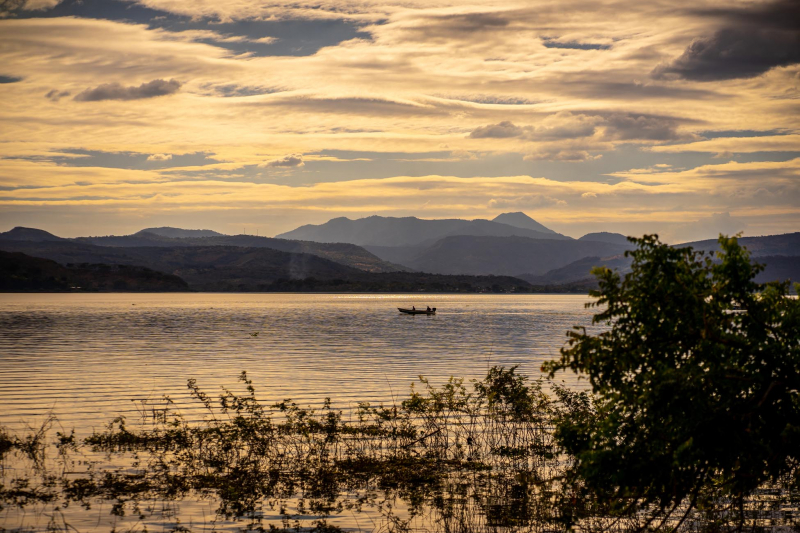
Photo: elsalvador 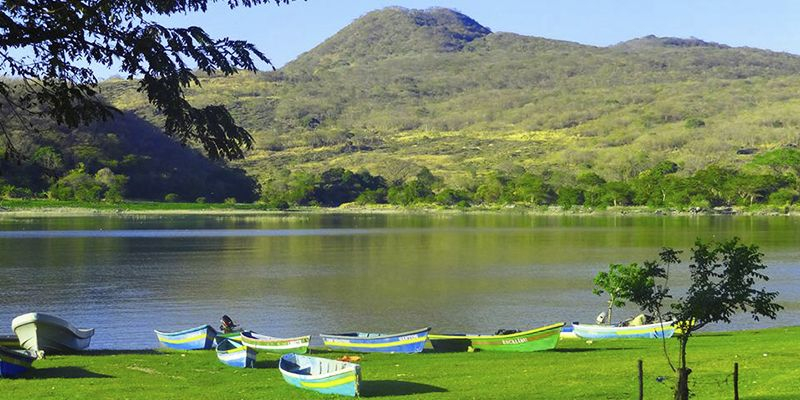
Photo: travelisimo -
This Honduran body of water, also known as the Lagoon of Guaimoreto, is one of the best in all of Central America. Despite its diminutive size, this lake is incredibly biodiverse, and the Honduran government has designated the entire region as a protected wildlife sanctuary.
The lake is situated in Colon's northern section, and only a brief land sliver separates it from the Caribbean Sea. One of the greatest ways to explore the lagoon's mangrove forests and varied wetlands is by kayak or canoe. You might see a wide range of wildlife while paddling, including manatees, iguanas, monkeys, sloths, and other bird species.
Around the Lake Guaimoreto, there are numerous indigenous settlements, and you might witness people fishing there using traditional techniques. Sardines, loggerhead turtles, shrimp, horse mackerel, snook, tarpon, and blue crabs can all be found swimming beneath the surface of the waters, which are incredibly teeming with life.
Location: Trujillo, Honduras
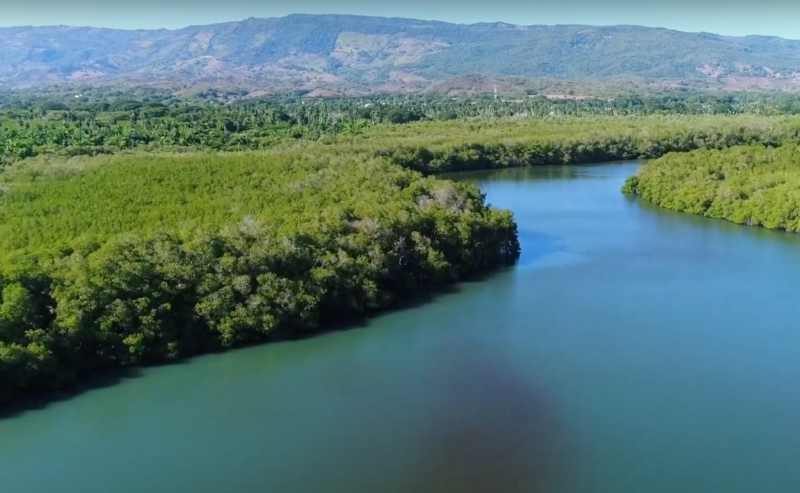
Photo: unep 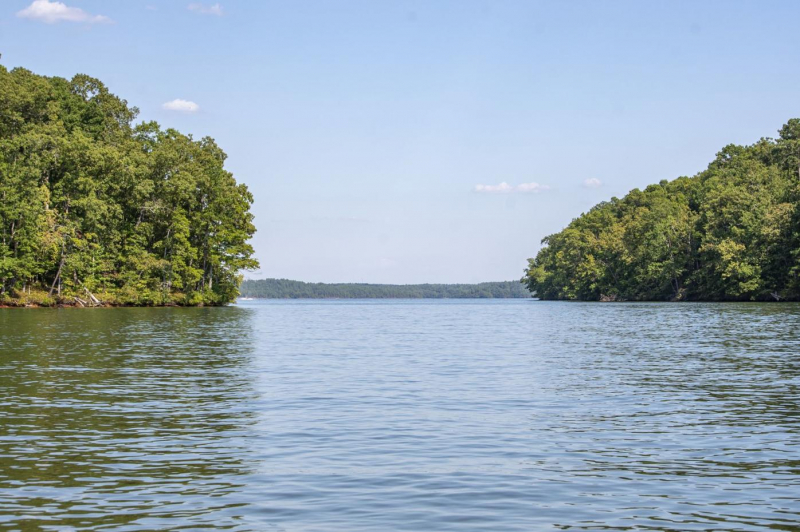
Photo: lakemagazine -
Every year, both Salvadorans and visitors from other countries flock to the shores of Lake Suchitlan, a popular tourist destination. The largest artificial lake in the nation, it really spans four separate departments due to its size. The lake also offers a wide variety of unusual plant and animal species, as well as a ton of entertaining activities for tourists to enjoy.
Kayaking, boating, touring the visitors' center, and discovering the lake's little islands are a few of the most well-liked activities on Lake Suchitlan.
You can also stop by some of the quaint little towns dotted around the lake's shores while you're there, such as San Cristobal, San Juan, Platanares, San Francisco Lempa, Colima, and San Luis del Carmen, among others. You can either drive between these towns yourself or stay near the lake and travel between them by La Luna Ferry.
There are many hotels in the adjacent town of Suchitoto if you want to stay for more than just an afternoon, but many of the other locations close to Lake Suchitlan are still underdeveloped.Location: northern El Salvador
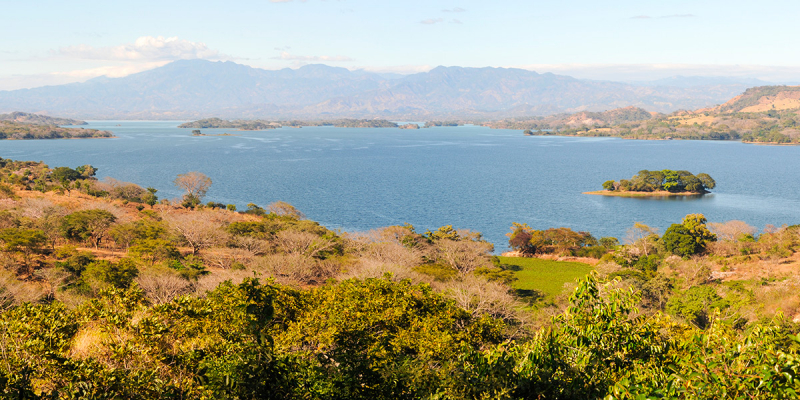
Photo: visitcentroamerica 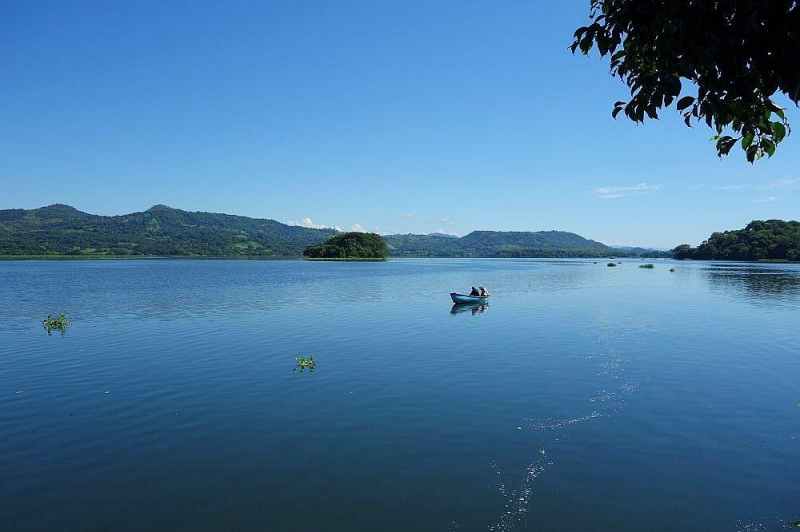
Photo: tripadvisor -
For those seeking to venture off the beaten road, Belize's Aguacate Lagoon is one of the best lakes in Central America. Aguacate Lagoon is a genuine piece of untouched paradise, even though much of Belize features diverse landscapes and rich species.
There is never a poor time to visit the lagoon; whenever you go, you will see children from the local hamlet splashing in the water, birdlife fluttering through the wetland, and tree-lined trails encircling the lake. At Aguacate Lagoon, birdwatching is one of the most well-liked tourist activities. Common species include flycatchers, warblers, hawks, falcons, storks, and herons. A Mayan site that has not been excavated is located on the reserve where Aguacate Lagoon is situated, which has historical value as well.
One of the great draws of the lagoon is its lack of popularity as a tourist destination; there aren't many shops, eateries, or hotels nearby. This is why it's crucial to pack everything you'll need, such as water, bug spray, and sun protection, for the day.Location: Western Belize
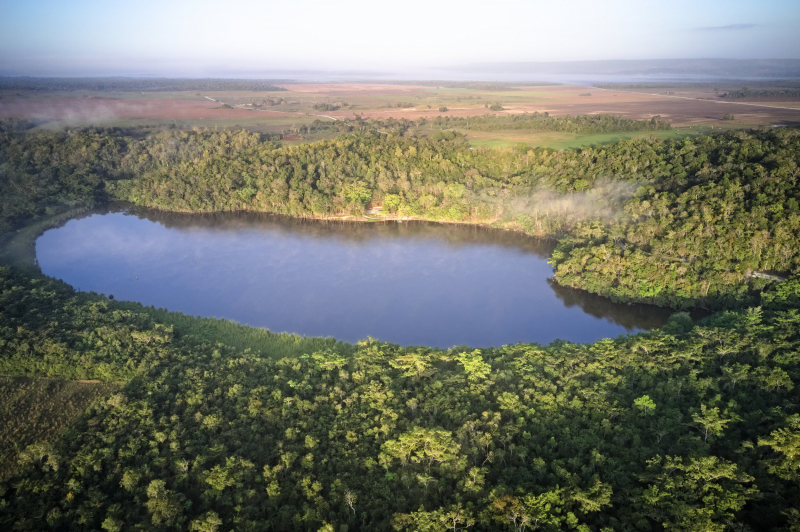
Photo: tripadvisor 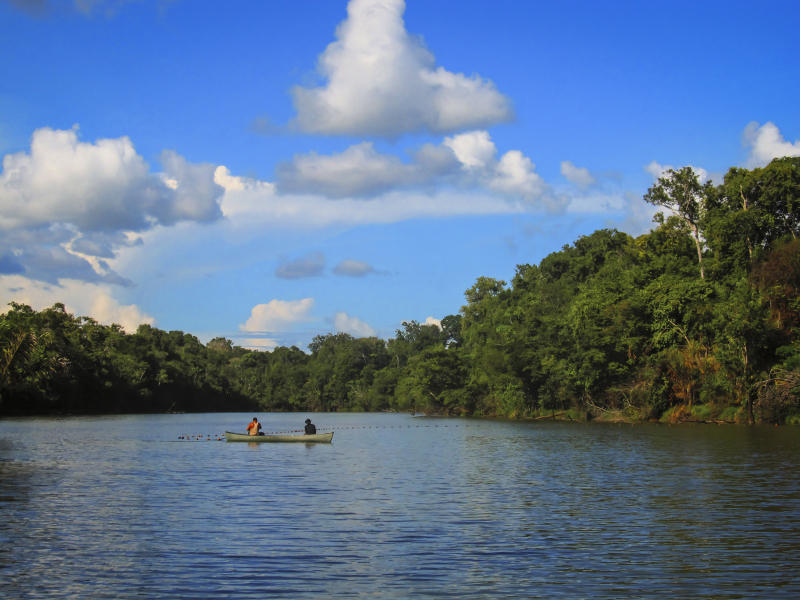
Photo: lesleydesouza

















